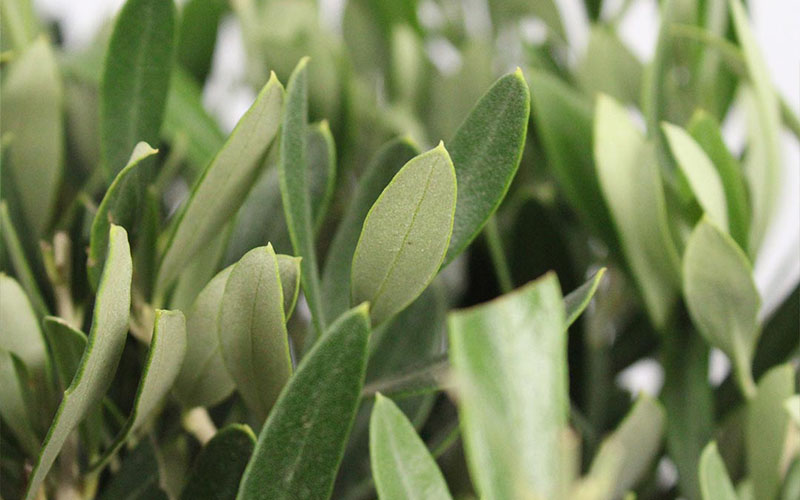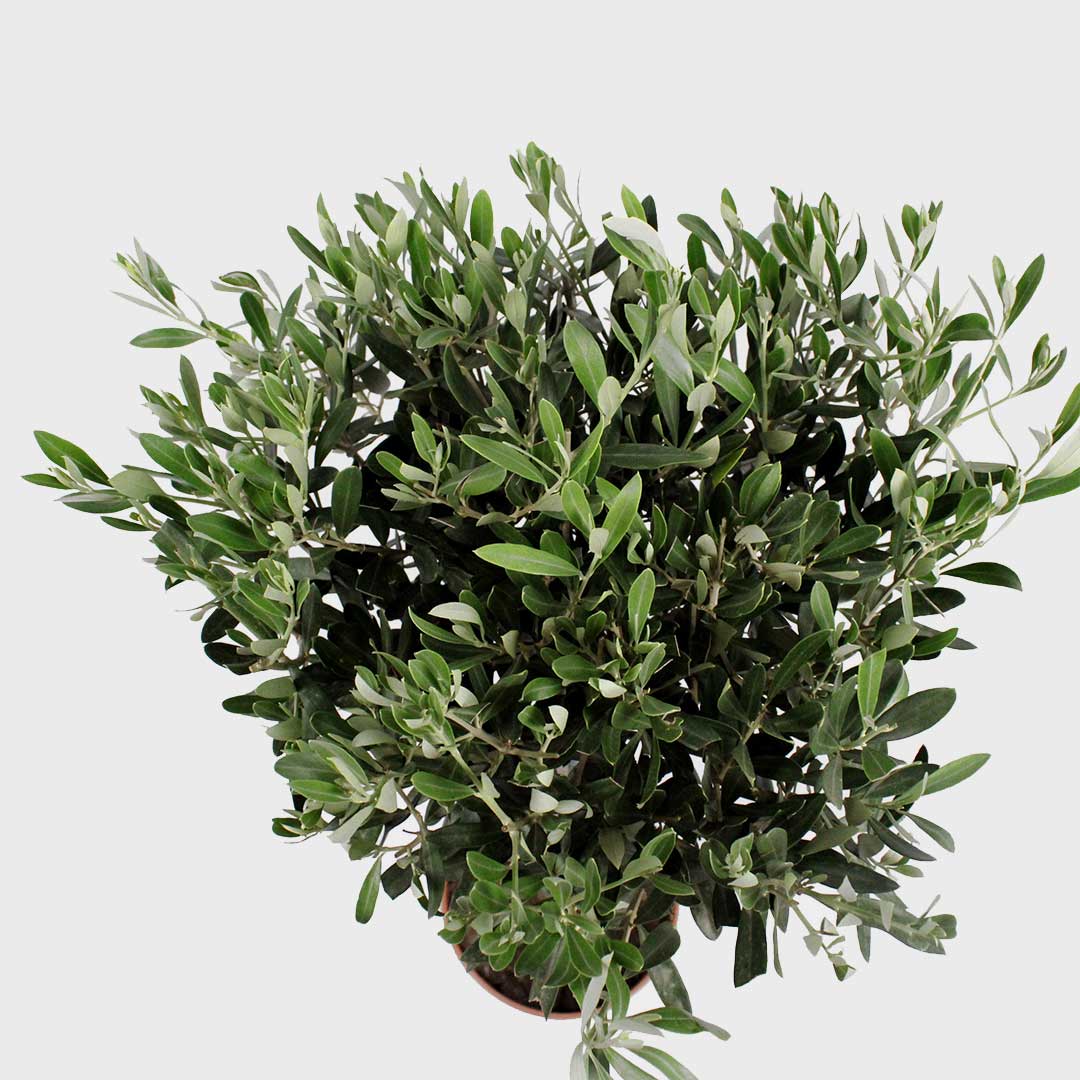
Deliver to
The Netherlands
 English
English

It can come as a surprise to many when they discover that an Olive tree, Olea Europaea, can work as an indoor tree as well. It has a silverish, light green foliage which provides an elegant aura to your aesthetic. Don’t have too many expectations for your plant to bear fruit if it’s indoors all the time, but the foliage of the leaves is enough reason to invest in the plant.
Bright light
Water once a week
Non-Toxic
Non Air-purifying
In nature the Olive tree is used to a lot of brigh direct sunlight. Therefore, the Olive tree prefers a location that receives a lot of sunlight. It can adjust to both direct as well as indirect light, as long as the light is bright. Sometimes, you can even place it in partial shade, but not for a long period of time.
If your olive tree is outside, you may need to water an olive tree two to three times a week in summer. Especially if the plant is enjoying full sun outside. However, this is not necessary when the plant is placed indoors.
If your olive tree is indoors, watering once a week is generally sufficient.
Then in winter, watering once every 2-3 weeks is sufficient. Make sure not to water too much, or root rot may occur. When an Olive tree gets too much water, most leaves will start to become yellow, usually in combination with brown leaf tips or spots.
The Olive tree uses extra energy from spring onwards to make new leaves. As a result, the plant needs extra nutrients. You can provide these nutrients by plant nutrition. We recommend giving plant nutrition once a month. From spring until autumn. After autumn and in winter it is better not to give extra nutrients. In the winter, plant nutrition can actually be harmful for the Olive tree!
Repotting the Olive tree is necessary every 2 years. Repotting the plant every 2 years gives it new nutrients and more room for root growth. The airier soil is also very good for the water flowing through. The best period to repot is spring.
The most ideal temperature for an Olive tree (Olea europaea) is typically between21 to 29 degrees Celsius. They are tolerant of a wide range of temperatures but can be damaged by severe cold or extreme heat.
Pruning an Olive tree is beneficial for its health, productivity, and overall shape. It also helps an Olive tree to remove dead or old branches, promotes a better air circulation and sunlight penetration, encourages new growth and fruit production. Therefore, it also helps an Olive tree to maintain the desired size and shape of the tree. Pruning is usually done during the dormant season to minimize stress on the tree.
If the air is too dry, the Olive tree can suffer from spider mites. To prevent spider mites, it is best to use the plant sprayer once a week. Spider mites are an infection of mites on plants. You can recognise the infection by infected leaves and a kind of cobwebs. If you have come across spider mites, it is best to place the plant outside. Wind and moisture from outside will quickly keep the spider mite away.


The olive tree we sell, the Olea Europaea, is winter hardy to -10 degrees.
It is certainly possible to bring the olive tree inside during the winter. Keep the temperature inside in mind. If it is too warm the olive tree will continue to grow and skip its winter sleep. However for a healthy olive tree it is important that the olive tree goes through a cold period.
In an ideal habitat olive trees can grow up to 9 metres tall. As an indoor plant the olive tree can grow to about 2 metres.
The most common reason for brown leaf tips on an olive tree is overfertilisation of the plant. Besides overfertilisation, overwatering is also a common reason for the appearance of brown leaf tips. In case the plant is overwatered, over time yellow leaves may appear in addition to brown leaf tips.